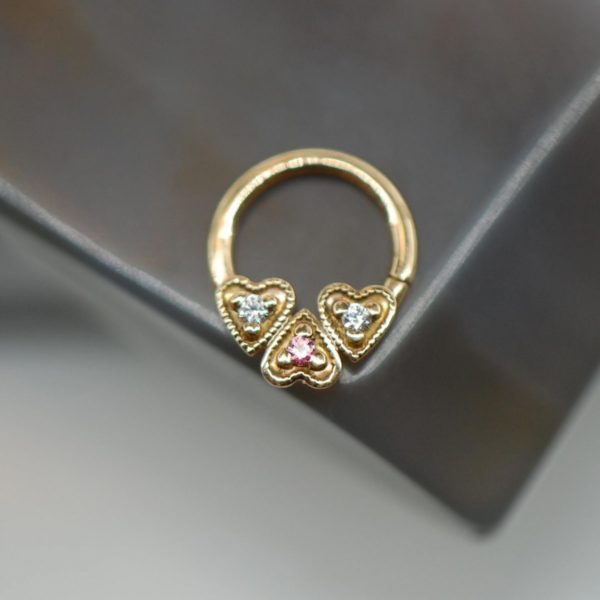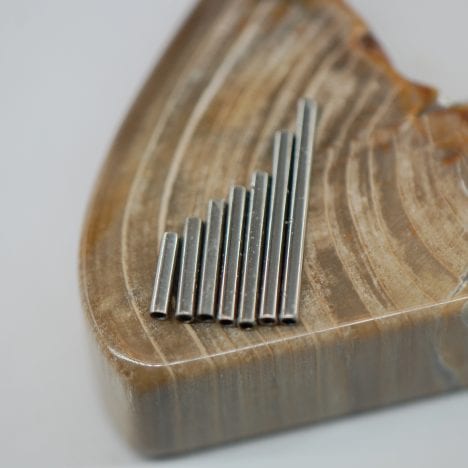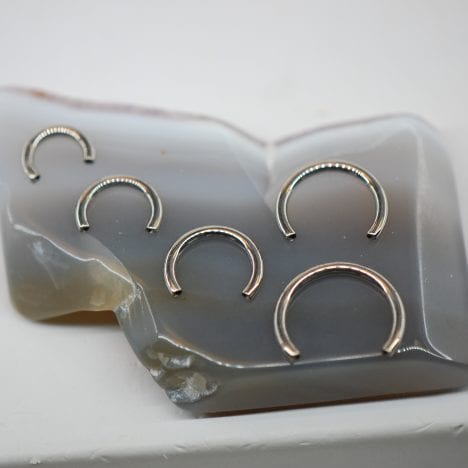Hydrogen peroxide is a product many of us are quite familiar with; we’ve kept it nestled in our bathroom cabinets for most of our lives. We’ve all gotten use to splashing it on any wound we’ve ever gotten, including body piercings. That’s where it goes wrong. Peroxide might be okay for a scraped knee or skinned elbow but it doesn’t belong ANYWHERE near your body piercing. Often times clients look at us in shock when they first hear this, so we decided to write a little educational article all about why peroxide doesn’t belong on, in, or near your body piercing.
In the world of wound care there are a lot of old wives tales and myths. From believing honey and peanut butter will keep a cut clean or insisting all wounds need to be uncovered at night, it’s easy to get confused as to what has real medical basis and what is just an uneducated assumption. It’s important to keep in mind the difference between medically backed facts, and anecdotal advice. Hydrogen Peroxide is one of the most debated in the topic of wound care. It’s been widely advocated through the generations, toting that the ‘bubbling’ when it’s applied is the peroxide cleaning all the bacteria from the wound. However that’s also often the peroxide attacking your own healthy tissue as well and removing your bodies natural immune defenses. That bubbling is oxygen. While peroxide oxidizes bacteria and viruses, it also oxidizes your bodies own good bacteria and some of the surrounding healthy tissue of the wound. Beyond that, there have been documented cases of this bubbling harming the wound. In some rare cases the oxygen bubbles enter into the bloodstream from the wound site, causing heart and blood pressure issues. Most doctors are moving toward a gentler method of wound care. If you suspect a wound could be infected, seeing a doctor first before using anything like peroxide is recommended. Another thing to note about wound care and piercings is that a piercing is a puncture wound. It’s not like a cut or scrape so its care follows different logic. Your piercing is created in a clean environment without the same risk as skinning a knee on the street or getting a cut at the beach. When your piercing is healing, the tissue inside your piercing is very fragile and the use of peroxide can damage that healing tissue and even set back the healing process.
These days, much of modern body piercing is done with implant grade titanium. Being a medical grade of metal, it’s a biocompatible material that is easy to sterilize and capable of being worn in the body long term. Overall its one of the best materials we can use to pierce with. However, titanium has some undesirable reactions with peroxide. Peroxide can cause the formation of uncontrolled hydroxyl radicals on the jewelry. In non-science terms- it can create an uncontrollable reaction which makes the surface finish rough and imperfect. Why does this matter? Well surface finish (how smoothly polished a piece of jewelry is) makes a huge difference when something is being worn in the body. Micro-imperfections on the jewelry can collect bacteria, debris, and cause issue with the healing and health of your piercing. Those imperfections can also make anodizing (the process to color titanium jewelry) fade or become patchy. This means not only should you refrain from using peroxide on your healing piercings, but it shouldn’t be used near healed piercings and jewelry either.
Titanium can be damaged by peroxide based/containing products as well. Many whitening toothpastes and mouthwashes can damage the surface of oral piercing jewelry, and create an easier environment for plaque buildup. With oral piercings be mindful of the products you use, and if you use strong whitening products, consider popping in to see your piercer once a month for a deep clean on the jewelry and to have any anodizing touched up. This also applies to hair products, specifically peroxide based lighteners, dyes, color removers, etc. Upper ear piercings tends to be the main victims, and more then once we have seen clients come in with their jewelry having turned a hazy grey instead of its beautiful bright anodized tone thanks to harsh hair products coming into contact with the pieces. Sometimes this can be cleaned and re-anodized, but other times the damage is too great and the piece will need to be re-polished or re-purchased. With hair products we suggest covering your ear with a disposable glove or shower cap to prevent product from getting on it when you are doing any chemical processes. Be aware that many acne products (cleanses, ointments, etc.) contain peroxides as well and should be kept away from piercings and jewelry during use and application.
Bearinger, Jane P., et al. “Effect of Hydrogen Peroxide on Titanium Surfaces:In Situ Imaging and Step-Polarization Impedance Spectroscopy of Commercially Pure Titanium and Titanium, 6-Aluminum, 4-Vanadium.” Journal of Biomedical Materials Research, vol. 67A, no. 3, 2003, pp. 702–712., doi:10.1002/jbm.a.10116.
Oxygen embolism after hydrogen peroxide irrigation of a vulvar abscess vBJA: British Journal of Anaesthesia, Volume 88, Issue 4, 1 April 2002, Pages 597–599, https://doi.org/10.1093/bja/88.4.597





